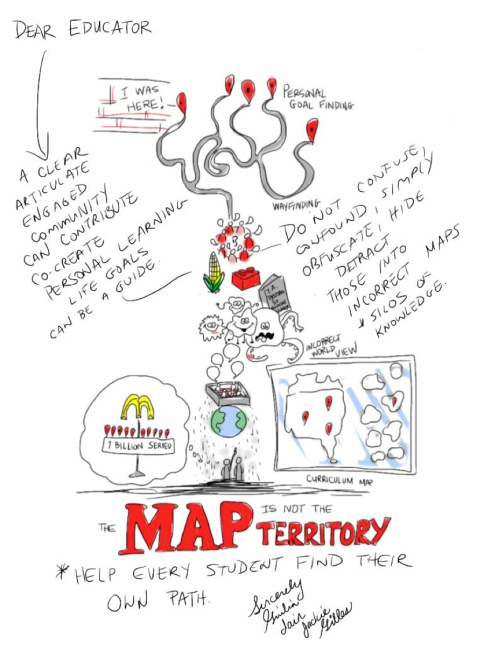NEW YORK, April 25, 2012 /PRNewswire/ — TED, the nonprofit organization devoted to “Ideas Worth Spreading,” today launches the second phase of its TED-Ed initiative: a groundbreaking website [http://ed.ted.com] housed on TED.com that enables teachers to create unique lesson plans around TED-Ed video content.
TED-Ed seeks to inspire curiosity by harnessing the talent of the world’s best teachers and visualizers – and by providing educators with new tools that spark and facilitate learning. TED-Ed launched in March with a channel on YouTube, as well as an open call for educators and animators to submit lesson ideas and animation reels. Just five weeks later, the channel has attracted more than 2.4 million views, 42,000 subscribers, and more than 3,000 comments.
The TED-Ed site was built with a $1.25 million commitment from Kohl’s Department Stores, and optimizes TED content for use in educational settings. It is launching today in Beta, and the content it currently contains – a few dozen videos – is for illustrative purposes. The point of the site is what teachers can do with those videos.
Each video featured on the site is mapped, via tagging, to traditional subjects taught in schools and comes accompanied with supplementary materials that aid a teacher or student in using or understanding the video lesson. Supplementary materials include multiple-choice questions, open-answer questions, and links to more information on the topic.
But the most innovative feature of the site is that educators can customize these elements using a new functionality called “flipping.” When a video is flipped, the supplementary materials can be edited and the resulting lesson is rendered on a new and private web page. The creator of the lesson can then distribute it and track an individual student’s progress as they complete the assignment.
What is more, visitors to the site are not restricted to flipping the featured TED-Ed videos. They can also create a lesson from scratch using any video from YouTube that permits third party embedding — the vast majority. Users can offer these lessons for wider distribution, and the best of them will be subsequently featured on the TED-Ed site for others to make use of.
“Flipping” is intended to indicate propelling the spread of a video, but is also a respectful reference to the concept of “flip teaching” in which teachers can expand overall teaching time by assigning homework on video. Currently this is hard to do for many teachers, but the tools offered on TED-Ed ease the task and open up new possibilities.
Content and new features will continue to accumulate in coming months and a full launch is being planned for the start of the new education year in September.
“Our goal here is to offer teachers free tools in a way they will find empowering,” said TED Curator Chris Anderson. “This new platform allows them to take any useful educational video, not just TED’s, and easily create a customized lesson plan around it. Great teaching skills are never displaced by technology. On the contrary, they’re amplified by it. That’s our purpose here: to give teachers an exciting new way to extend learning beyond classroom hours.”
TED-Ed Catalyst Logan Smalley added: “The goal of TED-Ed is for each great lesson to reach and motivate as many learners as possible. The new TED-Ed website goes a step further, allowing any teacher to tailor video content, create unique lesson plans, and monitor students’ progress. By putting this new technology to use, we hope to maximize time in class and give teachers an exciting tool for customizing – and encouraging – learning.”
“Kohl’s is committed to kids’ education and we are thrilled to partner with TED to provide inspiring educational tools for teachers and students around the world,” said Julie Gardner, Kohl’s executive vice president and chief marketing officer. “We believe this new resource has the potential to enhance the way students learn and interact with curriculum and we’re excited to be a part of it.”
About the TED-Ed Website
The site builds on TED-Ed content – available on the TED-Ed channel on YouTube – by allowing educators to create custom lessons around each video. By publishing and sharing the lesson, the lesson-creator can measure its effect on an individual student, a class or the world. Specifically, they can measure participation and the accuracy of any individual student’s answers on the assignment.
The TED-Ed website was created with support from Kohl’s as part of the $1.25 million commitment from the Kohl’s Cares cause merchandise program, which sells special merchandise and donates 100 percent of the net profit to benefit children’s health and education initiatives nationwide.
About the TED-Ed Channel on YouTube
The TED-Ed Channel on YouTube launched on March 12, 2012 with 12 exclusive videos. The site now has about 60 videos with accompanying materials, including both TED-Ed original content as well as TEDTalks.
TED-Ed video content is optimized for learning and geared towards teachers, students and the classroom – especially high school and college, though content is appropriate for lifelong learners.
The video content is built to deliver a lesson quickly (in 3-10 minutes), in a way that extends beyond the lecture format for which TED is known.
The videos provide teachers with new tools, which they can use to complement their existing lessons.
About the TED-Ed Call for Submissions
TED-Ed’s open call for submissions invites the world’s best visualizers and teachers to contribute their lessons worth sharing.
Teachers and animators can submit proposals online at http://education.ted.com.
The TED-Ed team reviews each submission, pairing selected visualizers with chosen teachers to create dynamic, 3-10 minute videos that share a lesson.








